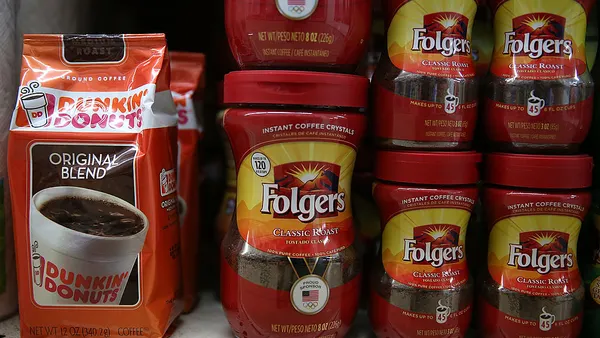Dive Brief:
- Since autumn, the trucking industry has experienced tight capacity and often extremely high rates as a result of wildfires, tropical storms and the ELD mandate that went into effect in mid-December, FreightWaves reported last week.
- Current weather issues consist of a Polar Vortex, a low pressure zone causing abnormally frigid temperatures throughout much of the country, including the East Coast and Midwest. Accordingly, spot rates have risen to their highest point yet, with dry van spot rates averaging between $3.78 to $3.91 per mile.
- Other factors are contributing to the newly high rates as well. Economic growth, American oil production expansion and downward pressure on per-truck productivity from the ELD mandate are all components of the spot rate price hikes.
Dive Insight:
Winter is sweeping the U.S. this first week of January, driving supply chains to adapt accordingly.
Although cold weather is expected this time of year, the risks of logistics disruptions are not few. In fact, recent reports suggest extreme weather has caused roughly 29% of supply chain shutdowns or disruptions since 2012. As climate trends shift, so must resilience plans.
Fortunately, the rise of technology is facilitating logistics preparation.
Although California may have faced the most destructive wildfire season in a decade, supply chain managers handled the crises expertly by rerouting their shipments in advance or in real time. More often, now, solutions like IBM's Operations Dashboard for drivers and dispatchers are propping up to help professionals avoid weather-related delays.
UPS, for example, ensures their drivers benefit from a multi-tier, year-round weather protection system.
"UPS has training and precautions in place to help protect our people from serious cold weather-related issues," Matthew O'Connor, Public Relations Manager at UPS told Supply Chain Dive. "A variety of communication methods (exist) to alert our employees to the effects of weather-related stress, cold or heat, prior to the most extreme months of the year."
"On extremely cold days, we remind our employees to pay attention to the warning signs of cold-related stress, and provide tips during pre-work meetings and prior to drivers leaving our sorting facilities." Despite excessively cold weather, then, O'Connor says cold-related issues "are rare."
Many carriers consider safety a top priority during this season, and that may lead to fewer trucks on the road — and therefore higher rates — during particularly cold spells of the year.













